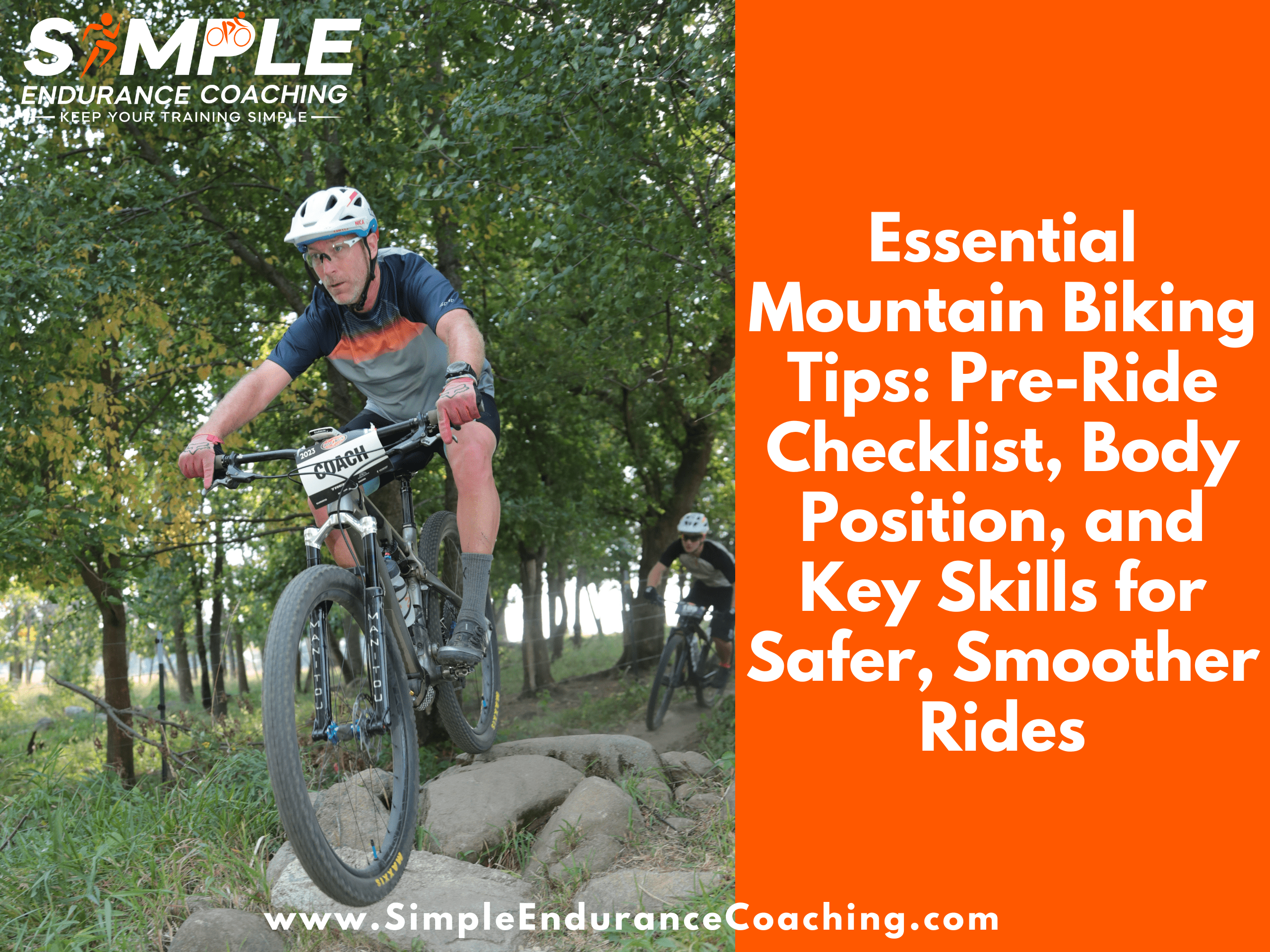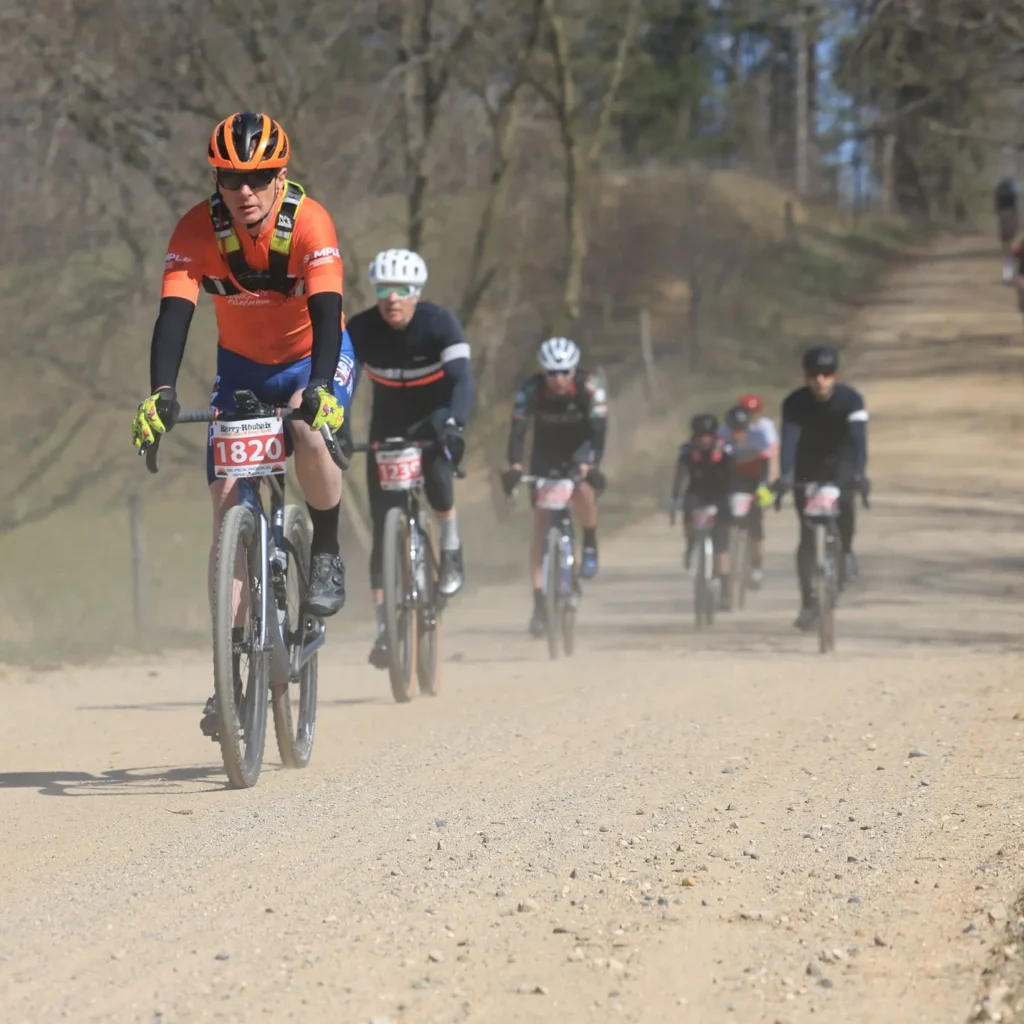Simple Endurance Coaching mountain bike coach
A smooth and safe mountain biking experience starts long before you hit the trail.
Proper bike inspection and solid riding techniques are key to minimizing mechanical issues and reducing the risk of injury.
Whether you’re an experienced rider or just getting into mountain biking, following these essential checks and techniques will help you ride with more confidence and control.
Let’s get into the fundamentals of bike prep and essential skills to improve your performance on the trail.

The A, B, C, D’s Before You Ride
Before heading out for a ride, performing a quick pre-ride inspection can significantly reduce the chances of mechanical failure.
The four essential checks-A, B, C, D-cover key components of your bike to ensure everything is in working order:
- A: Air – Check your tire pressure and adjust it based on the terrain and weather conditions. Don’t forget to inspect your suspension pressure if your bike has shocks.
- B: Brakes – Ensure your brake levers are positioned correctly and that the bolts are tight. A quick brake test can help prevent mishaps on the trail.
- C: Crankset/Chain/Cassette – A clean, lubricated chain is essential for smooth shifting and efficiency. Check that the cassette and chainring(s) are securely in place and have no broken teeth.
- D: Derailleur & Dropper – Shift through all gears to ensure smooth transitions, and if you have a dropper post, confirm that it is functioning properly.
By performing these quick checks, you’ll minimize potential issues and keep your rides safe and efficient.
Bike Body Position
Your body position on a mountain bike has a major impact on your control, efficiency, and ability to handle technical terrain.
A relaxed yet active posture allows you to adapt quickly to changing conditions.
- Descending – Shift your weight back, lower your hips, and keep your chest open to maintain balance and control.
- Climbing – Lean forward slightly to keep weight over the pedals, preventing wheel slippage.
- Cornering – Stay centered on the bike, lean into the turn slightly, and use your legs to guide the bike rather than relying on your arms.
Bike Body Neutral and Ready Position
Understanding and mastering both the neutral and ready positions will help you tackle varied terrain with confidence.
- Neutral Position – Used for smoother sections, this stance keeps your knees slightly bent, elbows out, and hips centered over the pedals. Your back remains straight, and your feet stay flat on the pedals.
- Ready Position – Essential for technical sections, this stance requires a slight rise off the saddle, knees and elbows bent, hips back, and weight centered over the bike. This keeps you prepared for quick adjustments.
Eyes Up and Looking Forward
One of the most fundamental skills in mountain biking is keeping your eyes forward.
Looking ahead rather than down at your front wheel helps you:
- Anticipate terrain changes and obstacles.
- React more efficiently to unexpected trail conditions.
- Maintain better balance and stability.
- Flow smoothly through technical sections without abrupt corrections.
Braking: Covering the Brakes
Braking is a crucial skill that can make or break your ride.
Keeping one finger covering the brake levers allows for quick reactions without over-gripping.
Avoid sudden or excessive braking, especially on descents, as this can cause loss of traction.
Instead, use controlled modulation to maintain stability and flow.
Ratcheting for Technical Terrain
Ratcheting is a useful technique for navigating rocky or technical trails.
Instead of completing full pedal strokes, small back-and-forth pedal movements help you maintain momentum while avoiding obstacles.
This technique is especially useful when tackling steep or uneven terrain.
Mastering Shifting
Efficient shifting is key to maintaining a steady cadence and conserving energy.
Here are a few tips to improve your shifting:
- Shift before you need to-anticipate changes in terrain and adjust accordingly.
- Ease off the pedals slightly when shifting to reduce drivetrain wear and avoid chain drops.
- Practice smooth, consistent shifting to maintain momentum, especially on climbs and descents.
Improve Skills to Improve Performance
Mountain biking is a sport that requires both preparation and skill.
By following the A, B, C, D pre-ride checklist and focusing on key techniques like body positioning, braking, and shifting, you can ride with more confidence, control, and efficiency.
If you want to improve your mountain biking skills or have questions about optimizing your setup, reach out to Anthony James-he’s here to help you ride smarter and safer!
Three Things to Know About Mountain Bike Skills
1️⃣ Perform the A, B, C, D Pre-Ride Check – A quick inspection of Air, Brakes, Crankset/Chain/Cassette, and Derailleur can prevent mechanical issues and keep you safe on the trail.
2️⃣ Master Body Positioning for Control – A neutral position keeps you balanced, while the ready position helps you navigate technical terrain with better stability and confidence.
3️⃣ Refine Key Riding Techniques – Braking with control, shifting smoothly, and using ratcheting in tricky sections will improve efficiency and make your ride more enjoyable.
Need more?
Reach out to Anthony James here: [email protected] or 414.915.6788
Anthony is a certified NICA coach and experienced mountain bike skills instructor.




